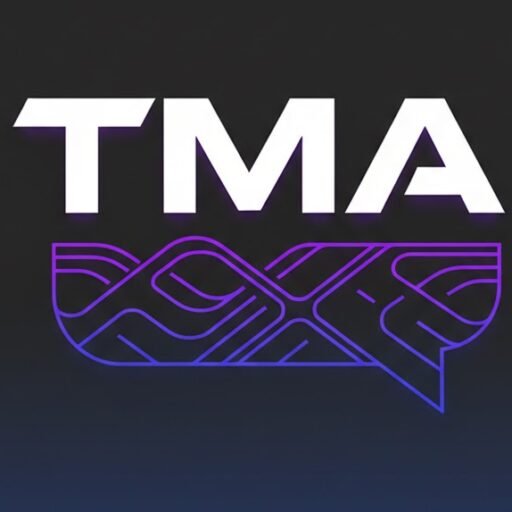Market Pulse
In a significant market pronouncement, digital asset management titan Grayscale has issued a compelling forecast, predicting ‘explosive growth’ for the altcoin sector. This optimistic outlook is not without its caveats, however, as the firm specifically highlights a curated list of 11 crypto assets poised to meet a fresh set of evolving regulatory standards from the U.S. Securities and Exchange Commission (SEC). Coming at a time when the broader crypto market is navigating complex macro currents, Grayscale’s report suggests a new era of institutional-grade compliance and validated investment opportunities for a select group of alternative cryptocurrencies.
Grayscale’s Bullish Vision for Altcoins
Grayscale, known for its leading role in bringing digital assets to traditional investors, posits that the coming period will see a significant shift in market dynamics. Their latest research indicates a strong potential for specific altcoins to outperform as they align with increasingly stringent regulatory frameworks. This isn’t a blanket endorsement for all alternative assets, but rather a strategic bet on those demonstrating a commitment to transparency, robust governance, and clear utility that resonates with institutional mandates.
- Targeted Growth: The forecast emphasizes a selective, rather than broad, altcoin rally, focusing on compliance-ready projects.
- Institutional Readiness: Focus on assets that can meet the rigorous due diligence requirements of large-scale investors and funds.
- Market Maturation: Suggests a transition towards a more regulated and therefore, more appealing, investment landscape for institutional capital.
The Regulatory Imperative: Adapting to Evolving SEC Standards
The U.S. regulatory environment remains a dominant force shaping the trajectory of the crypto market. Grayscale’s report underscores the critical importance of adapting to the SEC’s evolving guidelines. For the 11 identified assets, readiness to comply with what are expected to be refined and potentially stricter standards is not just a competitive advantage, but a prerequisite for sustained growth and mainstream adoption. These standards likely encompass:
- Enhanced disclosure requirements for token issuers and related entities.
- Clearer definitions of asset classification (e.g., security vs. commodity).
- Robust market surveillance and anti-manipulation measures.
- Operational transparency for underlying protocols and decentralized autonomous organizations (DAOs).
Such compliance efforts are designed to mitigate risks for investors and foster a more stable market, aligning digital assets more closely with traditional finance paradigms and attracting cautious capital.
The Exclusive Eleven: Paving the Way for Compliance
While Grayscale has not publicly named the 11 specific crypto assets, the implication is clear: these are projects that have either proactively engaged with regulators, possess a robust legal framework, or have inherent characteristics that make them more amenable to classification and oversight. Their potential to meet upcoming SEC standards could position them as frontrunners in attracting significant capital flows from institutional players who have historically been hesitant due to regulatory uncertainty. This could also spur a ‘flight to quality’ among investors, favoring compliant assets over those operating in a grey area.
Market Implications and Investor Sentiment
This forecast could profoundly impact investor sentiment and market strategies as we close out Q4 2025. For traditional institutions, the identification of a cohort of compliant altcoins offers a clearer pathway for allocation, potentially diversifying their digital asset portfolios beyond just Bitcoin and Ethereum. For retail investors, it serves as a strong signal about the future direction of the market – one increasingly valuing regulatory clarity alongside technological innovation.
- Diversification Opportunities: Institutions can expand beyond BTC/ETH with increased confidence.
- Compliance Premium: Compliant assets may command a premium in valuation as regulatory hurdles are cleared.
- Increased Scrutiny: Other altcoins may face pressure to demonstrate similar compliance or risk being overlooked by institutional capital.
Conclusion
Grayscale’s projection of explosive altcoin growth, specifically tied to a cohort of 11 assets prepared for new SEC standards, marks a pivotal moment for the crypto industry. It signals a discernible move towards a more mature, regulated, and institutionally accessible market landscape. As we move further into Q4 2025 and beyond, the industry will be keenly watching which assets emerge as leaders in this new compliance-driven environment, potentially unlocking substantial value and redefining the altcoin narrative for years to come.
Pros (Bullish Points)
- Potential for significant price appreciation for compliant altcoins.
- Increased regulatory clarity could attract more institutional investment into the crypto market.
- Validation for a select group of altcoins meeting stricter compliance standards.
Cons (Bearish Points)
- Only a limited number of altcoins might meet the new standards, potentially leaving others behind.
- Regulatory standards could be more stringent than anticipated, slowing overall market adoption.
- 'Explosive growth' is a forecast, not a guarantee, and remains subject to market volatility and broader economic conditions.
Frequently Asked Questions
What does Grayscale's forecast mean for altcoins?
Grayscale's forecast suggests a selective but significant rally for specific altcoins that can meet new SEC regulatory standards, potentially attracting substantial institutional investment and driving a 'flight to quality' among investors.
Which altcoins are likely to be among the 11 identified?
Grayscale has not publicly named the 11 assets. However, they are likely projects with strong legal frameworks, transparent operations, and proactive engagement with regulators to ensure compliance.
How will new SEC standards impact the broader crypto market?
Evolving SEC standards are expected to foster a more regulated and stable market, enhancing investor protection and potentially paving the way for broader institutional adoption across the digital asset space.






